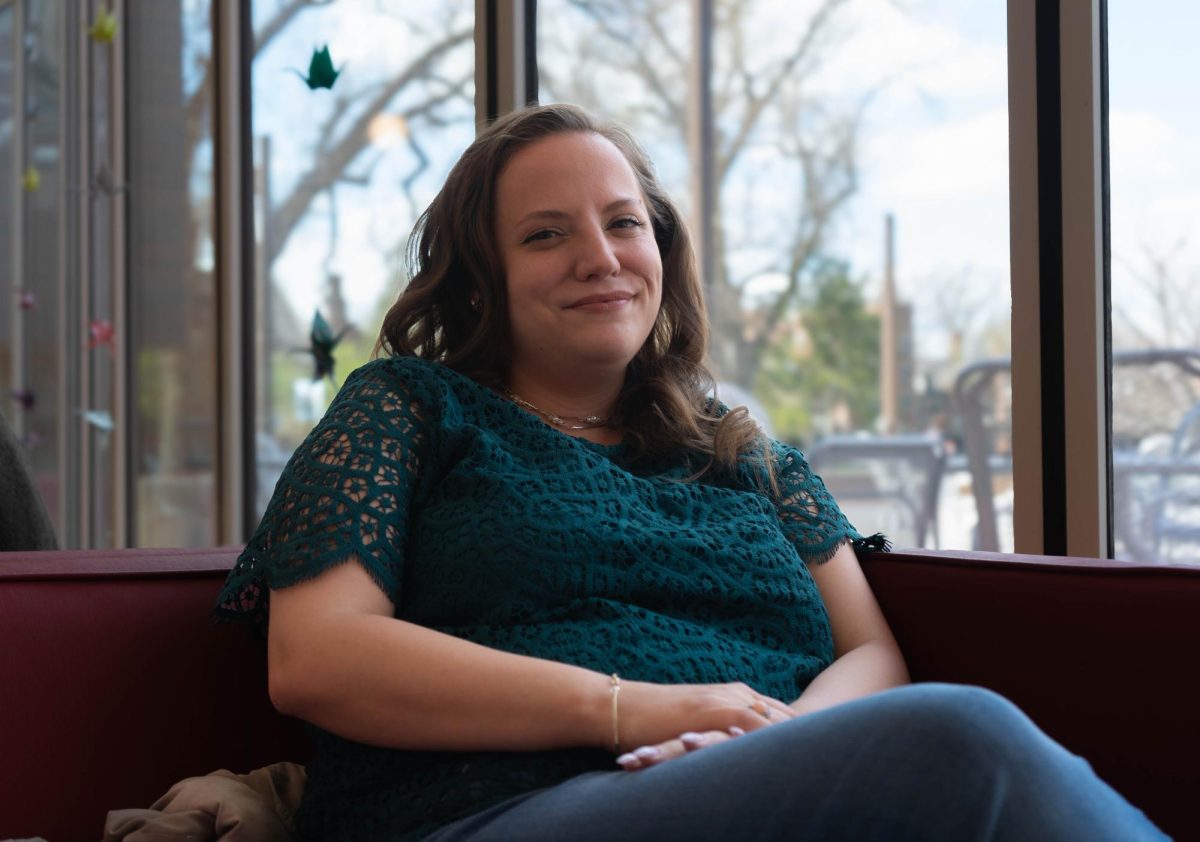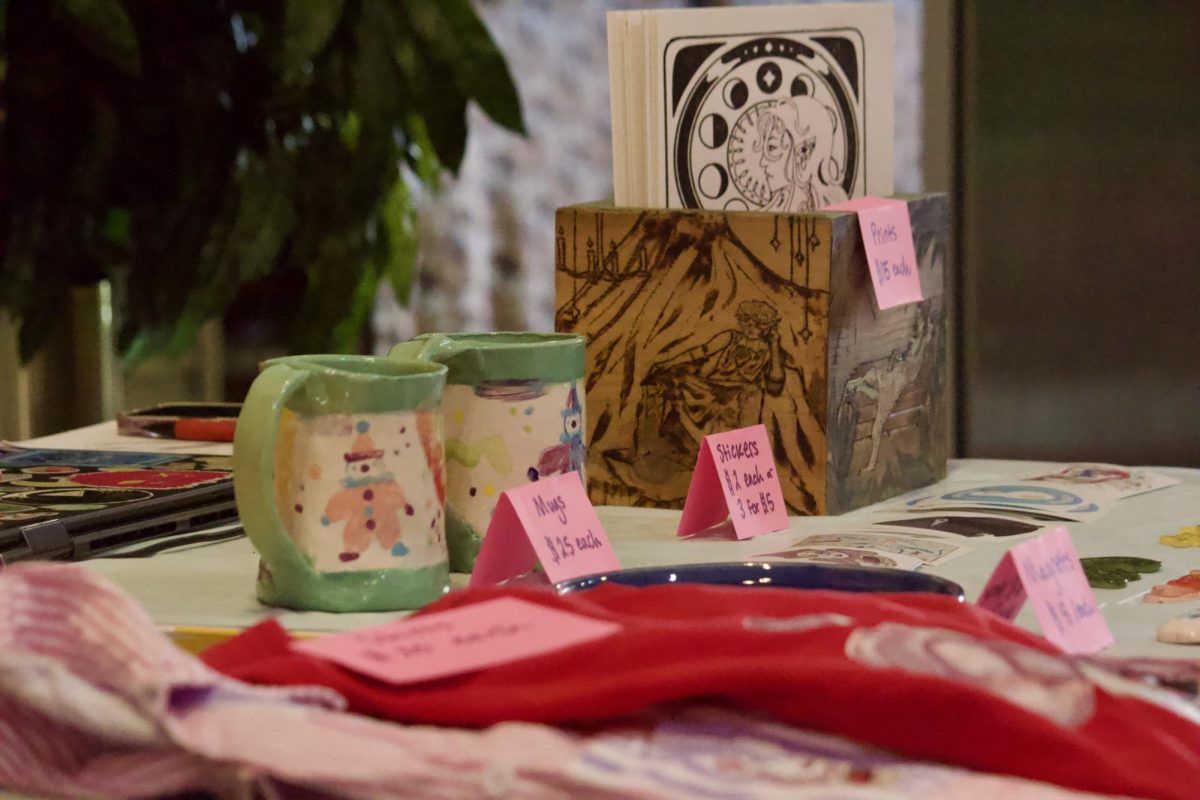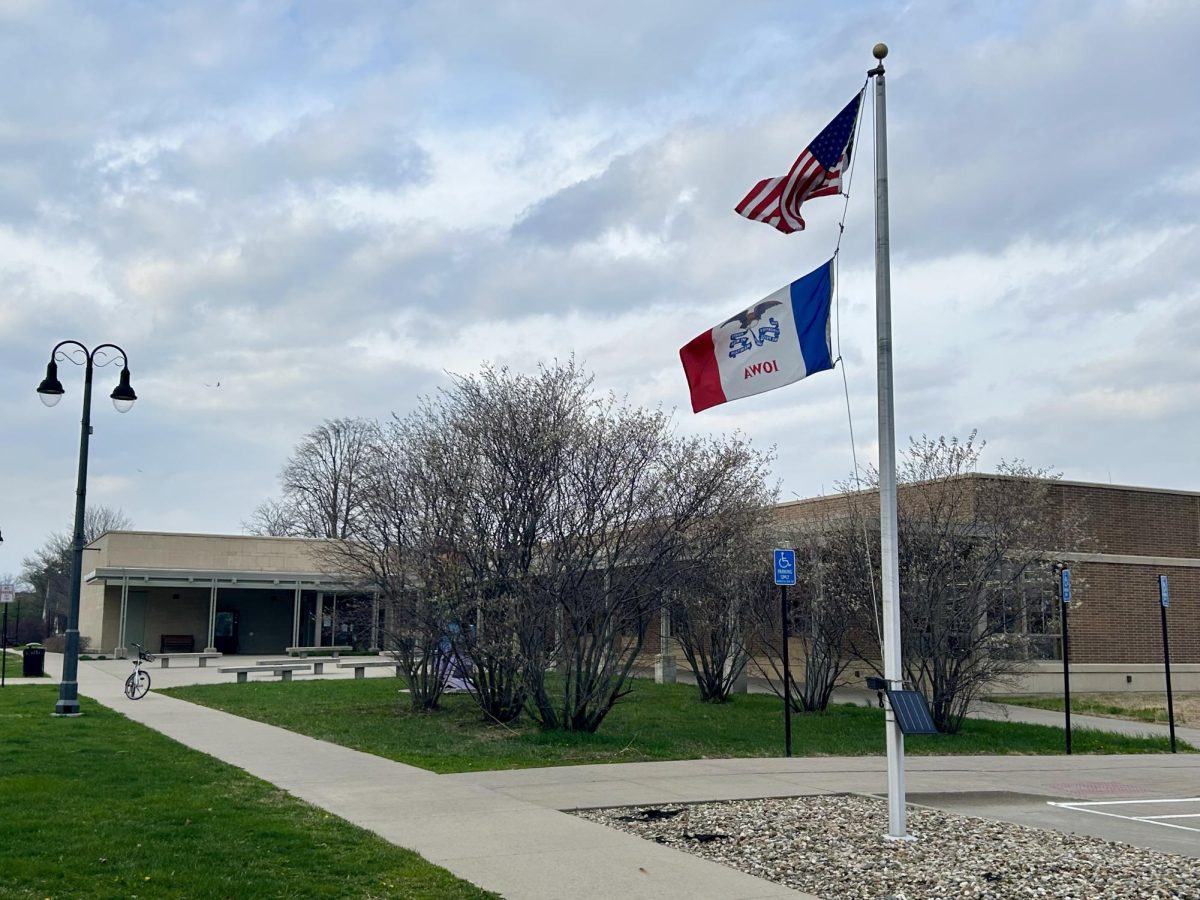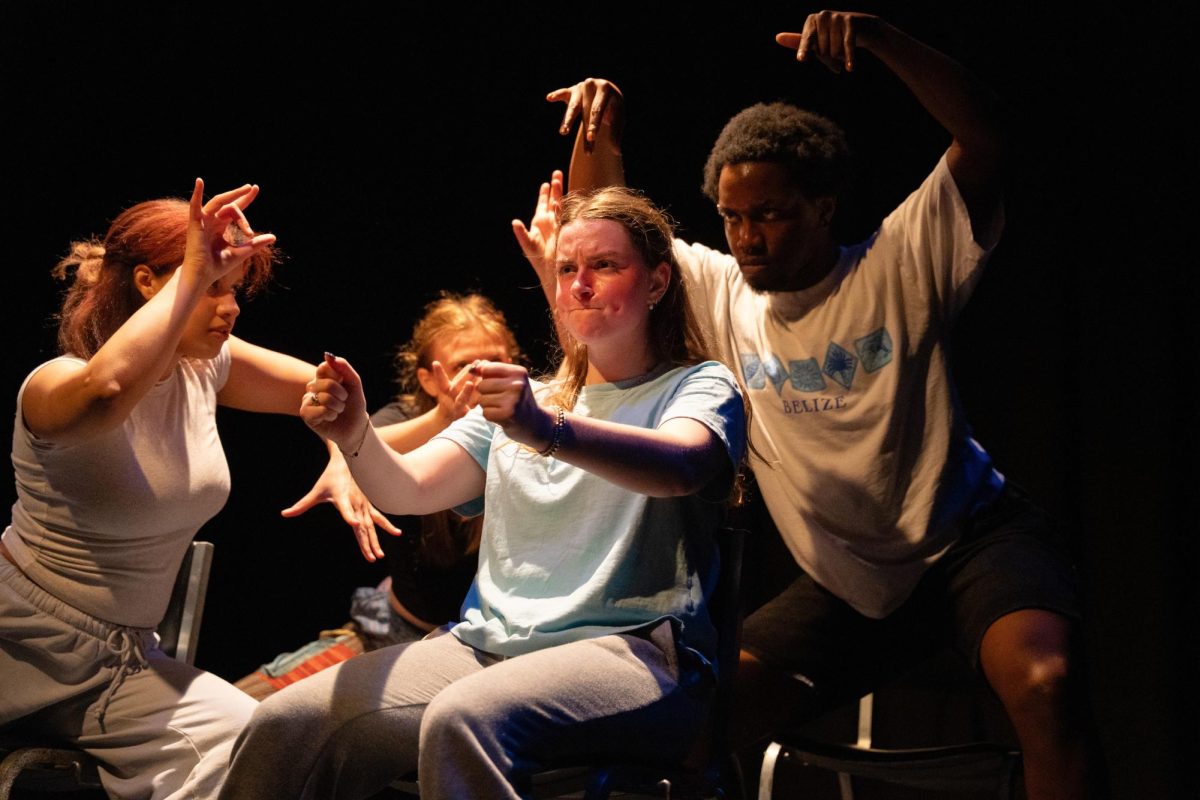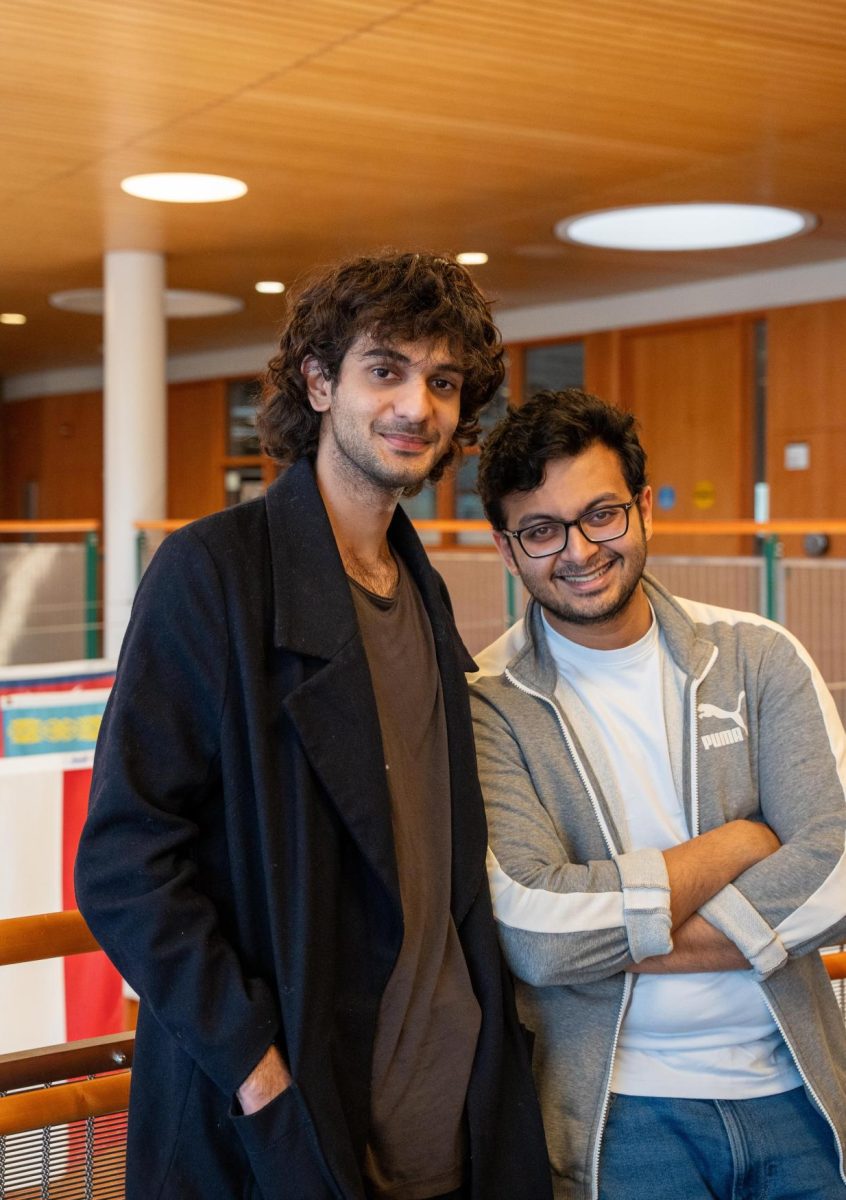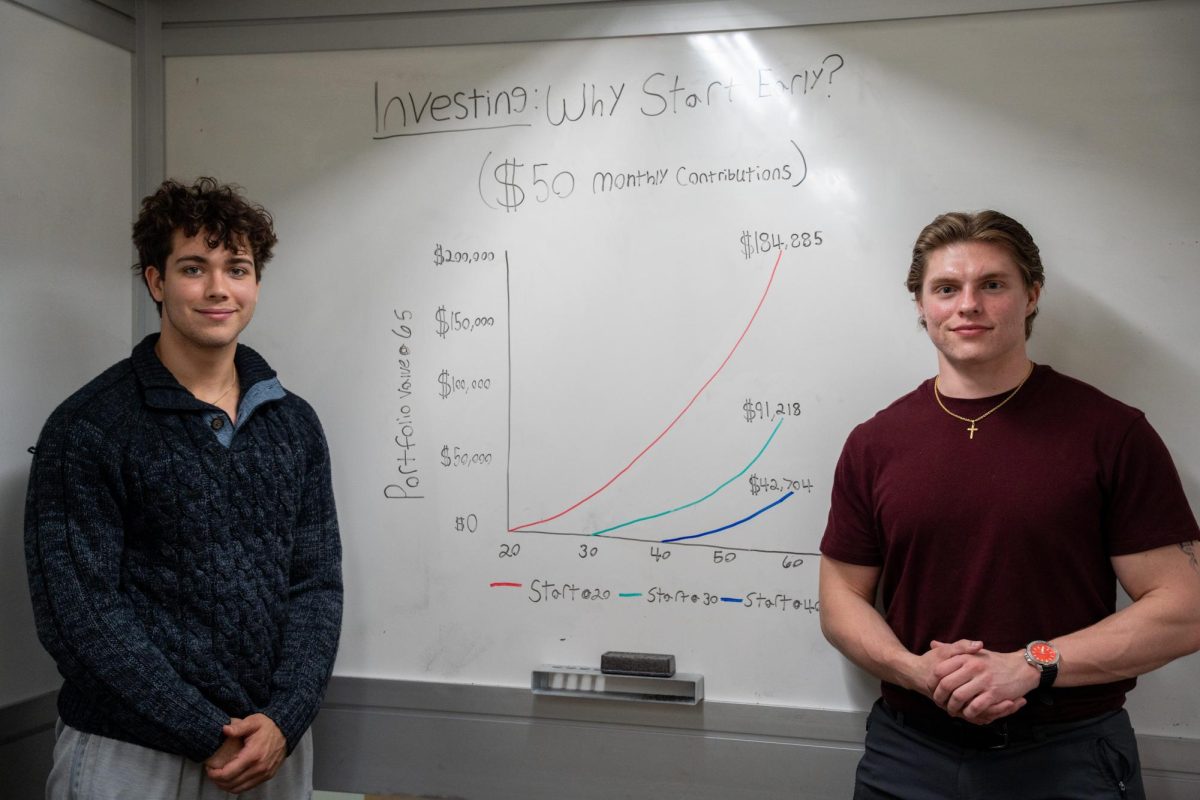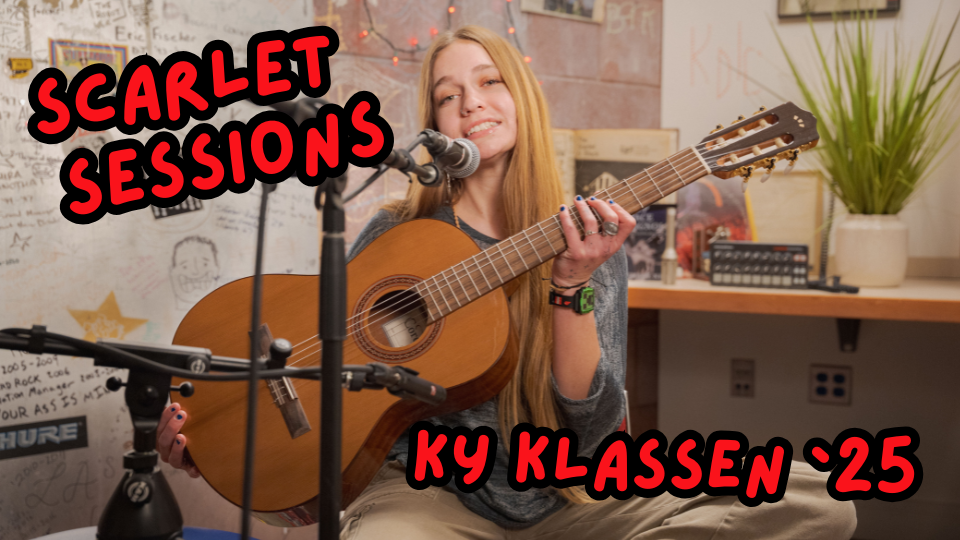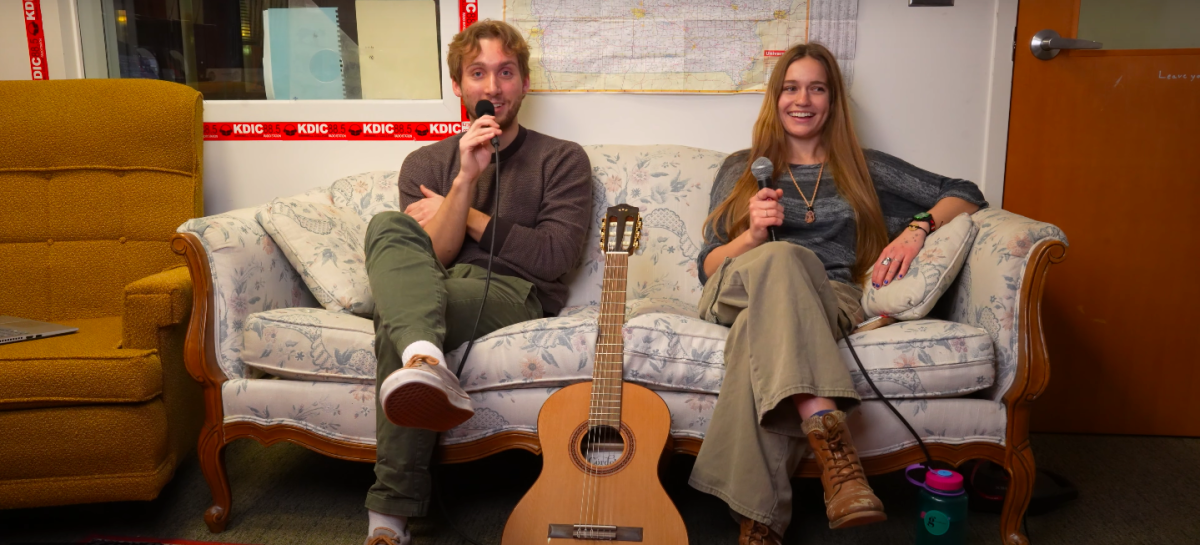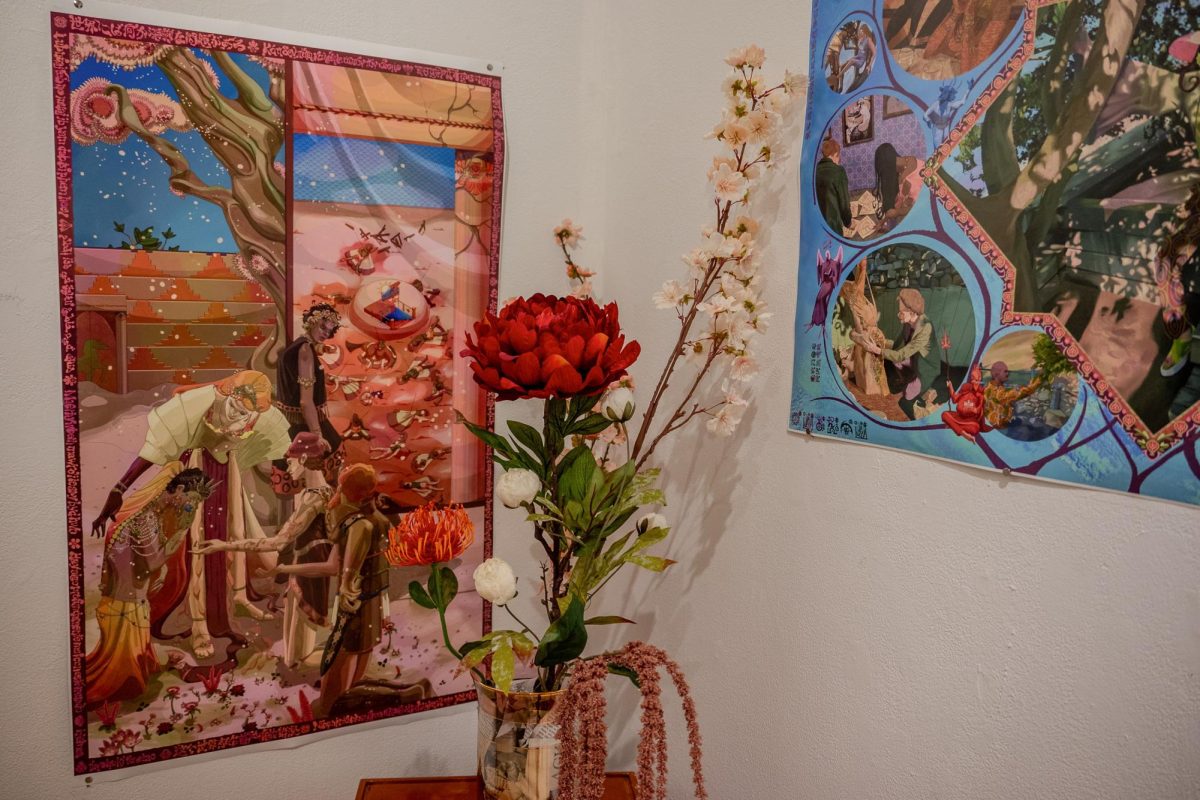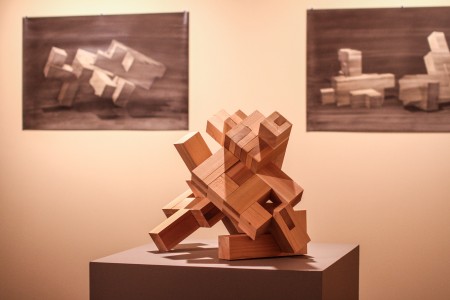
Tuesday, Sept. 30 marked the beginning of a two-week residency of Brooklyn-based artist Alex Dodge through the Artists@Grinnell program.
Last year, Faulconer Gallery, the Writers@Grinnell program, the Art and Art History and Theatre and Dance Departments worked together to begin Artists@Grinnell. The collaborative program hopes to bring artists to campus to interact with students and produce their own work. Alex Dodge is the first artist-in-residence on campus for the 2014-2015 school year.
Dodge began his career primarily as a painter, but he soon encountered obstacles in producing work.
“The first two years [painting] was easy … and then I hit a conceptual wall of being confounded by the entirety of art history and not understanding how to make a painting with all the possibilities that existed,” Dodge said.
In response to this creative block, Dodge began to take a reductionist approach to his work. Drawing inspiration from architecture, Dodge began to explore the relationship between humans and their environment in minimalistic ways.
“I found a way of dealing with the overwhelming sense of not knowing what to do by finding systems to work with, systems of reduction. This meant applying constraint. A lot of that eventually evolved into working better with computers,” Dodge said.
This began the transition to Dodge’s current focus on the relationship between humans and technology. His interest in computers led him to return to graduate school to obtain a degree in computer science. Since then, Dodge has developed his own software for creating digital art.
Artists@Grinnell has been hosting various events with Dodge throughout his stay to provide opportunities for students to interact with and learn from his experience as an artist. In particular, Dodge hopes to provide insight into the relationship between artist and medium.
“I would like to be able [to] convey the importance of understanding your medium on a very fundamental level. Whether you’re making traditional works or digital works or anything in between, I think that the most important part of what my experience has been as an artist [is] just learning from your material,” Dodge said. “If you have the ability to understand what you’re working with, then it helps you to grow and to enrich your artistic process.”
The programming kicked off with a student lunch on Tuesday, Sept. 30. Students engaged in a conversation with Dodge about art history and materiality.
“It was a great dialogue. I started with stuff that I was going to talk about and then the students really had a lot of great things to add,” Dodge said.
Programming continued throughout his stay, with an official artist talk on Wednesday, Oct. 8 at 4:15 p.m. in BCA 152. There, Dodge highlighted his recent work with traditional painting and computer code, as well as how working with technology influences art.
“The end of the talk [was] a general examination of the challenges faced by any artist using new technology to make work, challenges and opportunities,” he said.
Dodge also made class visits to critique student work and engage in dialogues outside the Art Department with students studying Computer Science and Japanese.
Kathlyn Cabrera ’14, Post-Baccalaureate Fellow and organizer of Artists@Grinnell, says that these interdisciplinary dialogues are an essential part of the program.
“The project of Artists@Grinnell is to bring together artists who come to campus [with] students and various faculty members,” Cabrera said. “What we are really trying to do here is to get as much interaction between … different departments as possible because a lot of times we have artists visiting campus and people from the sciences don’t know about it. It’s a really important aspect of the program to reach out to all these other people … and get them to have interactions with artists.”
Dodge’s residency concluded with a pop-up exhibit of the work he has produced during his stay in Grinnell on Thursday, Oct. 9 in BCA 132. He showed a collection of drawings and sculptures.
Students engaged with Dodge, and interacted with members of the campus community both to teach and to learn.
“I think already … I’m kind of blown away by Grinnell,” Dodge said. “The amazing thing about a residency is that it’s not just a time to work. It is a dialogue. I’m learning a lot from having a dialogue with students.”




